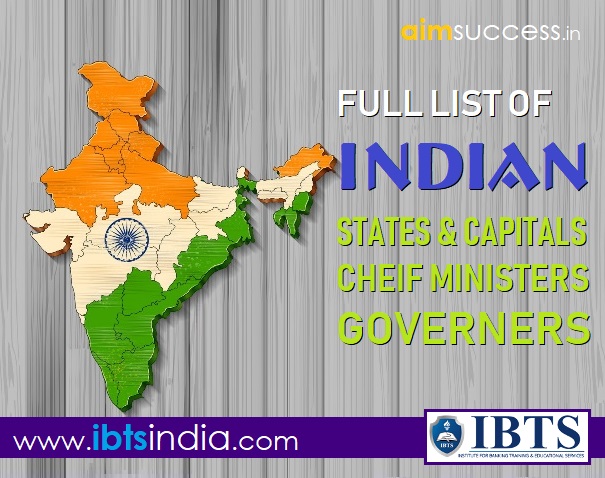Reading Comprehension for IBPS PO/ NIACL 2018: 23 August
Reading Comprehension is just about careful reading of passage and questions given. Thus Reading Comprehension plays a vital role in getting the best score in English Section, one need to deal it with proper strategy and accuracy. Right now, the questions asked in this head require good practice. Only after practicing well, you will be able to score better and in least time. Here is another set of RC Questions to improve your speed and accuracy. Make most of it.
Note: Try to attempt all 5 questions in 6-7 mins to take a lead.
Directions : Read the following passage carefully and answer the questions given below it.
The morale as well as investor perception of nationalized banks has never been worse. All this despite the fact that Indian economy is growing at a rapid pace, demonetization has accelerated CASA deposits and reduced the cost of funds, global economy is growing faster, and global financial system hitherto has no alarm signals, inflation is under control, back home there is stable political government, currency is steady and foreign debt investors have shown no panic. Still, we have an unprecedented banking crisis. The government and the regulator can take full credit for the current state of affairs. I make a distinction between PSU and nationalised banks. SBI and IDBI Bank are PSUs, but not nationalised banks. IDBI Bank can be divested without parliamentary approval and SBI is relatively safe. While I discuss issues of PSU banks in general, the existential threat is with the nationalised banks. There are 19 nationalised banks, of which 11 are already under Prompt Corrective Action (PCA) and a newspaper report indicated that five more may soon get the similar status. The banks under PCA have several restrictions limiting their ability to lend, expand or incur major capital expenditure.
The government strategically made a bold move to infuse an unprecedented Rs. 2.11 lakh crore to revive PSU banks. The strategy has not worked, and it calls for a prompt corrective action (pun intended). The proposed capital infusion was not backed up by governance reforms but got followed by an unexpected scam, denting the credibility of the banking system like never before. Mishandling of a $2-bn scam can snowball a $2-trillion economy into a crisis. A fraud is a fraud and can happen in any system and in any country. We should learn from the USA and Israel on how to deal with fugitive criminals, by less noise and more action. The blame game or politicising the issue helps nobody. What is sadly missing is lack of alignment of objectives and actions by the government and the central bank.
If one wants to rehabilitate a person addicted to drugs or alcohol, one takes a gentle approach to taper off the addiction and not a harsh do-it-now proach. Nobody can gainsay that early recognition of losses is prudent. But it results in capital erosion and must be in tandem with the key shareholder’s namely the government’s, ability to provide the capital. The regulatory forbearance must be reduced judiciously and withdrawn only at an appropriate time. The idea is to ease extraordinary pain of banks—which in fact is a legacy beyond control of the current management — and help them do business as usual to generate surplus so badly needed.
RBI instituted asset quality review (AQR) of banks in 2015, comprehensive assessment of bank balance sheets, which resulted in banks reporting sharp increase in GNPLs from 4.3% in FY15 to 9.3% in FY17 and further to 10.4% in 1HFY18. A bank chairman on anonymity gave me illustration of steel industry. Last two years have been golden years for the steel industry. Many units that became NPA due to AQR were not eligible for fresh loan or working capital credit. They missed the chance for revival, and their lenders, the opportunity to reduce NPAs. Now, there is a February 12 circular, withdrawing all the forbearances that were extended to banks for loan workouts effective March 1, 2018. This has sent panic waves across the banks as it could make things look much worse in their March 2018 balance sheet. In earlier days, PSU banks have been the government’s money machines to print notes to fetch votes through social welfare and anti-poverty schemes (I’m not against such schemes, but they ought to be funded fiscally by the budget) or fill coffers of corrupt politicians. There has been a huge reluctance to let go of this money machine, which is outside budgetary or parliamentary controls. The present government has stopped the use of machine for the corrupt, but the temptation to use it for votes remains. Although private and public banks have similar obligations, we see state-owned banks make dominant contribution to loss-making Jan Dhan accounts, micro insurance and loans under MUDRA scheme and set up branches in remote areas.
The nationalised banks have problems on the balance sheet with impaired assets exceeding 20% of loan book, ie almost 5 times their current net worth. These banks’ real valuable assets lic outside the balance sheet, in the form of huge franchise with 40% CASA deposits, branch network, millions of loyal and good customers. The franchise and intangible assets can be monetised only by privatisation. The franchise is fast eroding and depleting in value.
The current net worth of nationalised banks is Rs. 3.6 lakh crore and market capitalisation is less than half of it. In the past five years, the government has infused over `3 lakh crore and will need an estimated `3.4 lakh crore more by March 2019 to meet Basel-III norms. There is no hope of raising capital from the market in the foreseeable future. RBI restrictions and capital constraints are causing these banks to lose market share and particularly good customers. Credit ratings will keep moving downward, driving cost of fund upward. In the current situation, only resolute bold measures taken quickly can save these nationalised banks from extinction. It is unorthodox to take up such sensitive reforms in an election year. But it could prove to be game changer, like unprecedented and unorthodox reforms in the form of demonetisation and GST. What better time than present when the public angst is against use of taxpayers’ money to fill the bottomless black hole in PSU banks. Employees can be taken care of with attractive ESOPs.
1. What prompted the author to put an example of the rehabilitating method for person addicted to drugs or alcohol?
(A) To criticise the role of India media post Nirav Modi episode
(B) To condemn the hasty action taken by the government post PNB fraud
(C) To teach PNB a lesson how to tackle a case of huge bank fraud
(B) To condemn the hasty action taken by the government post PNB fraud
(C) To teach PNB a lesson how to tackle a case of huge bank fraud
1) Only (A)
2) Only (B)
3) Only (C)
4) Only (A) and (B)
5) All (A), (B) and (C)
2) Only (B)
3) Only (C)
4) Only (A) and (B)
5) All (A), (B) and (C)
2. What was/were the impact of ‘asset quality review’ (instituted by the RBI) on industry?
(A) Many industries turned into NPA due to asset quality review.
(B) Such industries were not eligible for fresh loans.
(C) Such industries were not given a chance for revival as they were denied working capital credit.
(B) Such industries were not eligible for fresh loans.
(C) Such industries were not given a chance for revival as they were denied working capital credit.
1) Only (A) and (B)
2) Only (B) and (C)
3) Only (A) and (C)
4) All (A), (B) and (C)
5) Only (B)
2) Only (B) and (C)
3) Only (A) and (C)
4) All (A), (B) and (C)
5) Only (B)
3. What happens when a bank is forced to work under ‘Prompt Corrective Action’?
1) The bank can lend only up to specified limit.
2) The bank cannot incur capital expenditure without the permission of the Central Government.
3) The central bank cannot change the lending rate on its own.
4) Only 2) and 3)
5) All 1), 2) and 3)
2) The bank cannot incur capital expenditure without the permission of the Central Government.
3) The central bank cannot change the lending rate on its own.
4) Only 2) and 3)
5) All 1), 2) and 3)
4. Which of the following statements is not true in the context of the given passage?
1) In order to meet Basel-III norms, the government has to infuse approx 3.4 lakh crore more by March 2019.
2) The present situation of banks is such that only resolute bold measures taken quickly can save them from extinction.
3) The author of the passage is totally against the old social welfare and anti-poverty schemes.
4) SBI is not a nationalised bank.
5) None of these
2) The present situation of banks is such that only resolute bold measures taken quickly can save them from extinction.
3) The author of the passage is totally against the old social welfare and anti-poverty schemes.
4) SBI is not a nationalised bank.
5) None of these
5. Which of the following statements does not correctly represent the true picture related to the Indian economy?
(A) India is passing through a phase of unprecedented banking crisis.
(B) Indian economy is growing at a rapid pace.
(C) Post demonetisation, foreign debt investors have lost interest towards investing in India resulting into less FDI.
(B) Indian economy is growing at a rapid pace.
(C) Post demonetisation, foreign debt investors have lost interest towards investing in India resulting into less FDI.
1) Only (A) and (B)
2) Only (B) and (C)
3) Only (A) and (C)
4) Only (A)
5) Only (C)
2) Only (B) and (C)
3) Only (A) and (C)
4) Only (A)
5) Only (C)
Answers:
- 2
- 4
- 1
- 3
- 5











